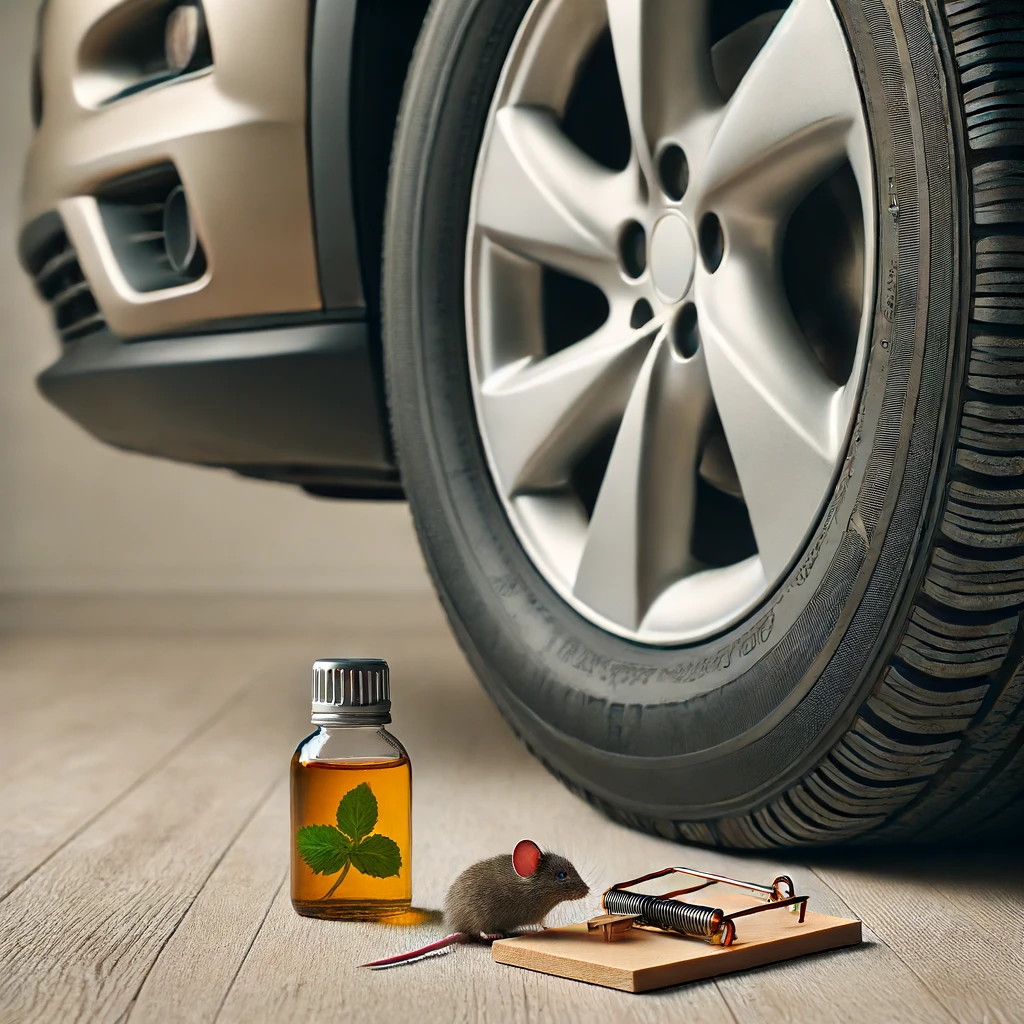Mice in your car can cause significant damage to wiring, insulation, and other components. Preventing these pests from entering your vehicle is crucial for maintaining its integrity and functionality. Here’s a comprehensive guide on how to keep mice out of your car.
Why Mice Are Attracted to Cars
Mice are attracted to cars for several reasons, including:
Shelter
Cars provide a warm and sheltered environment. During colder months, the engine compartment offers a cozy and protected space where mice can hide from predators and harsh weather. The various nooks and crannies within a car make it an ideal nesting spot.
Food
Food crumbs and trash can attract mice. If you often eat in your car or leave food packaging and crumbs behind, it becomes an inviting buffet for these pests. Mice have a keen sense of smell and can detect even small amounts of food, leading them straight to your vehicle.
Materials
Insulation and wiring can be used by mice for nesting. The soft, fibrous materials found in car insulation and seat stuffing are perfect for building nests. Mice will chew through wires, insulation, and upholstery to gather materials for their nests, causing significant damage in the process.
Signs of Mice Infestation
Recognizing the signs of a mice infestation early can help you take action before extensive damage occurs.
Droppings
Small, dark droppings around the vehicle are one of the first signs of a mice infestation. These droppings can be found in the cabin, trunk, or engine compartment. Regularly checking these areas can help you detect the presence of mice early on.
Gnaw Marks
Chewed wires, seats, and insulation are clear indicators of mice activity. Mice have a constant need to gnaw to keep their teeth sharp and short. Look for gnaw marks on wiring, plastic components, and upholstery, especially under the hood and in less accessible parts of the car.
Nests
Shredded materials forming nests in the engine or cabin are a definite sign of mice. Mice use shredded paper, fabric, and insulation to build their nests. These nests can often be found in hidden and protected areas such as the glove compartment, under seats, or in the engine bay.
Odor
A strong, unpleasant smell is another sign of a mice infestation. The smell is caused by mice urine, droppings, and decaying food they might have stored. This odor can be particularly strong and noticeable in closed environments like a car, especially if the infestation has been ongoing for some time.
Preventive Measures to Keep Rodents Out
Clean Your Car Regularly
Keep your car clean and free of food debris. Vacuum the interior and dispose of any trash promptly. For example, regularly vacuuming under the seats and in the trunk can prevent food crumbs from attracting mice.
Seal Entry Points
Inspect your car for any potential entry points and seal them. Mice can enter through small gaps and openings. For instance, check for gaps around the doors, windows, and under the hood, and seal any openings with steel wool or caulk.
Use Mouse Repellents
Use natural or commercial mouse repellents to deter mice from entering your car. Examples include peppermint oil, mothballs, or ultrasonic repellents. Place these repellents in areas where mice are likely to enter, such as the engine compartment or under the seats.
Park in a Garage
If possible, park your car in a garage rather than outdoors. A closed garage reduces the chances of mice entering your vehicle. Additionally, ensure that the garage is clean and free of any potential nesting materials.
Use Traps
Set up mouse traps around your car to catch any mice that might try to enter. Place the traps near the wheels and under the hood. Regularly check and replace the traps as needed.
Check the Engine Compartment
Regularly inspect the engine compartment for signs of mice. Look for nests, droppings, and chewed wires. For example, during routine maintenance or oil changes, check under the hood for any signs of rodent activity.
Additional Tips
Avoid Parking Near Food Sources
Do not park your car near dumpsters, bird feeders, or other food sources that might attract mice. Parking in areas where food is readily available increases the likelihood of mice seeking shelter in your vehicle.
Use Mesh Covers
Install mesh covers over air intake vents and other openings to prevent mice from entering. These covers can block access without restricting airflow, providing an effective barrier against small rodents.
Maintain the Surrounding Area
Keep the area around your parking space clean and free of tall grass, bushes, and other debris that could harbor mice. Mice are less likely to approach your vehicle if there are no hiding spots nearby.
Conclusion
Keeping mice out of your car requires regular maintenance and preventive measures. By keeping your car clean, sealing entry points, using repellents, and regularly inspecting your vehicle, you can protect it from mice damage. Implement these tips to ensure your car remains mouse-free and in good working condition.
FAQs
Can mice cause significant damage to a car?
Yes, mice can chew through wires, insulation, and other components, leading to costly repairs.
What smells do mice hate the most?
Mice dislike the smell of peppermint oil, mothballs, and certain commercial repellents.
How can I tell if mice have been in my car?
Look for signs such as droppings, gnaw marks, nests, and a strong, unpleasant odor.
Are there any electronic devices to repel mice?
Yes, ultrasonic mouse repellents emit high-frequency sounds that deter mice and other pests.
Can parking in a different location help?
Yes, parking in a garage or away from food sources and tall grass can reduce the risk of mice entering your car.
